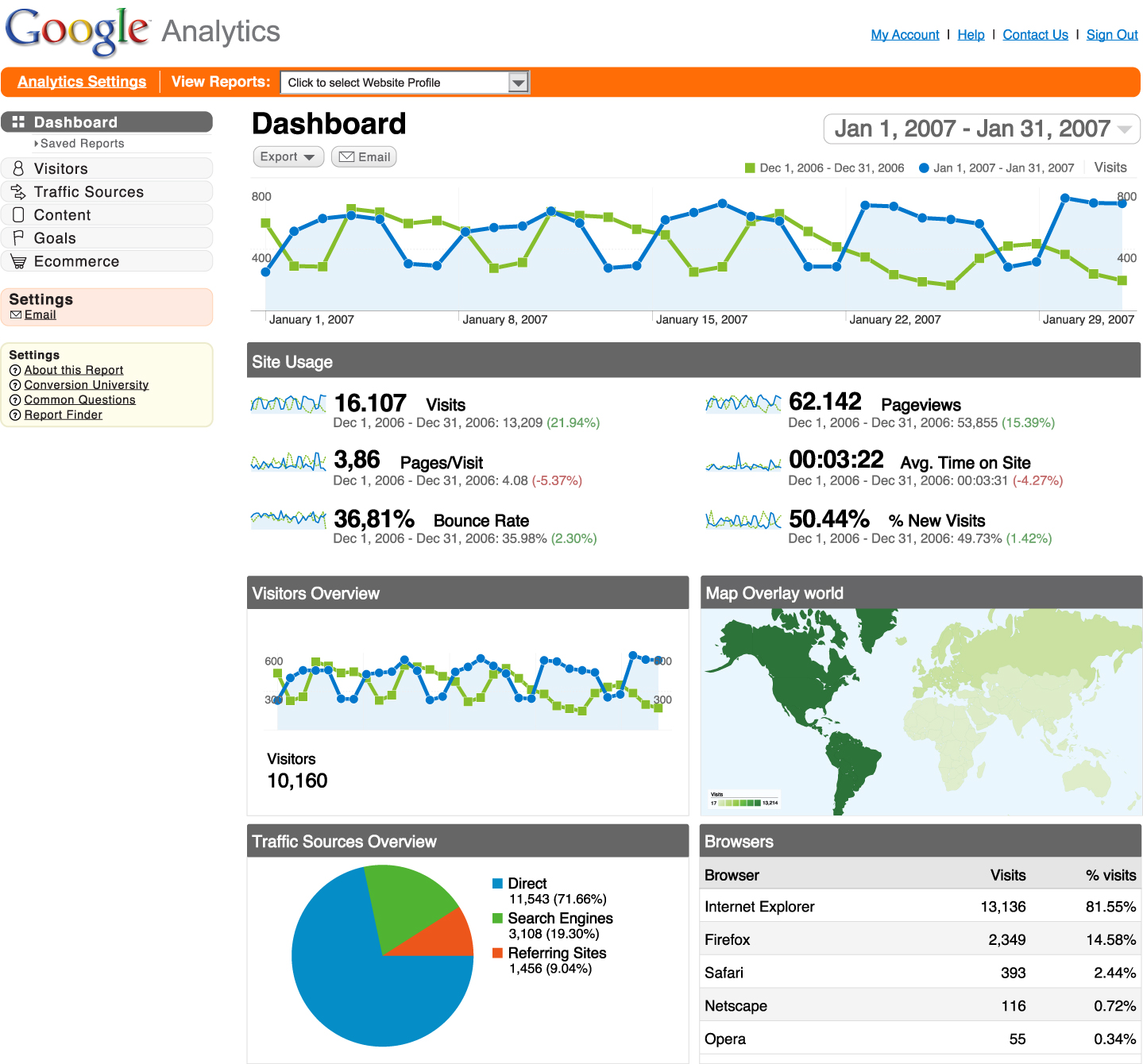
How to Get the Most Out of Google Analytics
Google Analytics, (or GA for those in the know), is the true alpha male of its division – The name has become synonymous with free web analytics tools. If, like most small business owners, GA is your tracking dashboard of choice, you may have been overwhelmed the first time you logged in due to the sheer amount of data and reports available to you. However, fear no more, here are 5 custom Google Analytics reports that will make your life easier (and revenue greater).
1. Goals
As with any good marketing effort, it’s very important to set objectives for what you want to accomplish, and your website is no exception. In GA, setting up goals is the best way to measure your site’s success rate. There are 3 types you can choose from for any given page:
- URL Destination: the most common option, this will tell you if your visitors are visiting the page you want them to (for example, a completed checkout page).
- Time on Site: as its name indicates, this will track users who spend either more or less than a specified amount of time on the site.
- Pages/Visit: this will let you know the number of pages visited more than, less than or equal to a predefined number.
Of course, you can fine-tune these goals once you are more comfortable with GA, and adapt them to lead/sales conversion types, define conversion funnels, etc.
2. Site Content Popularity
Are your visitors looking at what you want them to look at? Hopefully the answer is yes, and GA can tell you that right off the bat when you log in. Take some time to get familiarized with the main dashboard, as it will give you some of the basic metrics you need at a glance:
- Visits: a visit is counted every time someone checks out your website.
- Pageviews: the number of pages on your website viewed within the selected date range.
- Pages/Visit: the depth of visit, in other words, the number of pages viewed for any given visit.
- Bounce Rate: a visitor entering the site and leaving without performing any additional actions (such as viewing another page or submitting a form).
- Avg. Time on Site: pretty straightforward, the total time spent on your website divided by the number of visitors.
- % New Visits: the percentage of visitors that haven’t visited your website in the past 6 months.
3. High-Value Landing Pages
After spending time optimizing your landing page, you probably want to see how well it’s performing, right? This report shows you your top landing pages and how they are performing based upon goal completions (as set above) and the values of these goals.
4. Traffic Sources
Want to know where your visitors are coming from? There’s a report for that too! This one will offer you an in-depth look at how people are finding your website, divided in 3 categories:
- Direct Traffic: visitors that typed your domain into their browsers and went directly to your website.
- Referring Sites: sites that include a link pointing to a page on your website. These sites are often clients, vendors, or business partners.
- Search Engines: traffic that reaches your website after performing an online search.
You can also take a look at the “All Traffic Sources” report, which shows the top sources for your website. You can sort by Visits, Pages/Visit, and Bounce Rate. This will allow you to drill down even deeper into which sources perform better, or worse.
5. Top Keywords
Somewhat linked to the previous report, your top keywords report will tell you which phrases users have been using in their search engine queries before landing on your website. Based on these results, make sure to optimize your site and bid accordingly!
Are there any other reports in GA that you’re using on a daily basis? Share away!
© 2012 – 2018, Contributing Author. All rights reserved.



